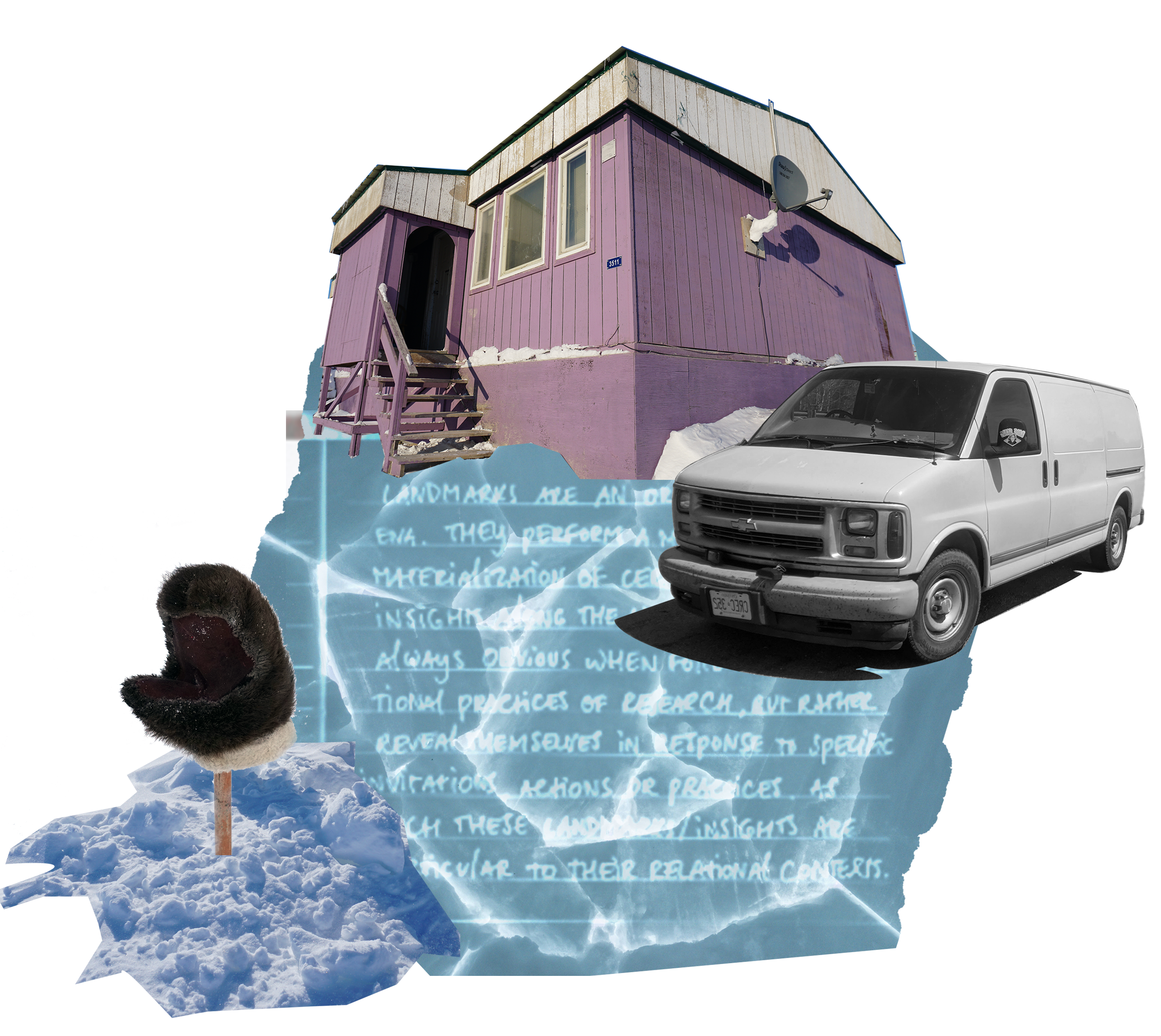Multiple Sites of Enunciation

Acknowledging the tension of our differences, when it comes to our entanglements within the overarching polar bear management and monitoring apparatuses, rather than attempting to erase them, aligns with the principles of ethical engagement, and the Inuit Circumpolar Council Protocol 2 calls for the recognition of Indigenous Knowledge in its own right.
The landmark, as a figure, has itself lots to teach us about how to acknowledge and relate to such differences.
As we acknowledge our differences, we move onto our own tracks- and continue our journeys side by side and laterally.
As we pass particular points and places in the land, lets say for example a rock formation, our tracks may split. As we each pass the rock formation on each side, two different perspective emerge, as the face of the rock-formation will present itself as different to each of us.
The point here is not to argue whether or not we are looking at the same rock formation, or how our subjective views change the way that the rock present themselves to us.
The point here is that the rocks are not determinable as separate from ourselves, our position in the landscape, where we have been and where we are going. Our practice of lateral movement has unfixed the rocks as not just something than can be located out there, but rather as something that can also locate us, and the many other other material agencies that make it possible for us to encounter the rock formation.
Lateral movemenet is not about a struggle for truth.
Landmark comes to matter in terms of how we relate to them. locate oursleves in the knowledge landscape
Movement and practice alongside each other
When it comes to the topic under address in the "Voices of Thunder" testimonies: the phenomena of polar bear harvesting quota- we agreed that it would be important for our differences in positionality of the BearWatch scientists and the Gjoa Haven community members to be explicitly acknowledged in some of our co-creative output.
Willing partners are to ‘appropriately, correctly, and respectfully acknowledge the "that's me" and the "that's you" of their differentiated worldviews' if they are to enter into ethical relationships with each other[1]. Such acknowledgement of differences enables parties to respects the integrity of each voice and avoid 'cultural confusion'. Cultural confusion is a state in which ‘we no longer know what informs each of our identities and what should guide the association with each other’[2][3].
- ↑ Institute for Integrative Science & Health. (2013b). Broadened and culturally inclusive view of science. Retrieved from http://www.integrativescience.ca/Themes/ScienceStory/
- ↑ Ermine, W. (2007). The ethical space of engagement. Indigenous Law Journal, 6(1), 193–203.
- ↑ Regulator, A. E. (2017). Voices of Understanding: Looking Through the Window.
- ↑ Inuit Circumpolar Council (2022). Circumpolar Inuit Protocols for Equitable and Ethical Engagement.
